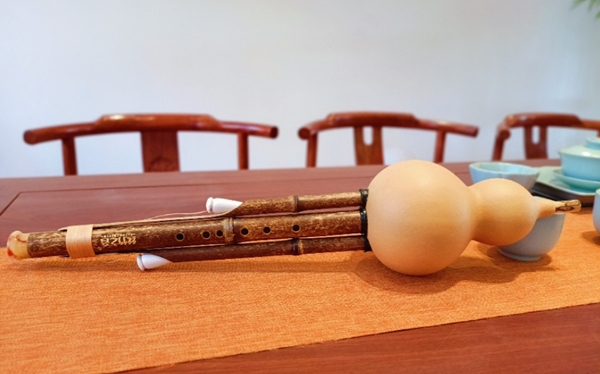Single spit of cucurbit flute
257 views · Organized by 湛鹰 on 2022-05-11
Hulusi articulation has single spit and double spit. The single spit will be introduced below. Single vomit is the basis of all sounds. Relying on the forward and backward telescopic movement of the tongue, the tongue is forced forward and hits the position between the teeth and the upper soft palate. When the tongue is quickly retracted, the mouth emits "spit" and spit. . . . . sound, this pronunciation method is single spit. According to the needs of music performance, due to the different strength of the tongue, single spit can also be divided into light spit and broken spit. The staccato is most suitable for playing strong, sturdy, and powerful sounds or phrases. It requires strong and flexible tongue strength, short pronunciation, and shortening of the duration of the original note. Gently spit is done by gently spitting the tip of the tongue outwards while exhaling, producing a weak head. The difference between it and spit-spit is that the distance of the tongue retraction and the position of the spit are different. The spit is mainly used on the first note at the beginning of each phrase and at the turning point of the phrase. Adding a light spit when playing the double sound and hitting the sound can make the appearance of the double sound hitting sound more accurate and clear. It is recommended for everyone to use it! It is not advisable to spit too lightly, otherwise it will affect the coherence of the music. Try not to breathe, especially to prevent the problem of spitting out a breath. In the process of playing the cucurbit flute, the lower abdomen should be strengthened.

Flexibly master the single vomit technique, whether it is an enthusiastic tune or a soothing tune, you can master it freely and play comfortably. Contact often, and gradually master the method of single vomit.
Involving musical instruments
Hulusi (pinyin: hú lu sī), also known as "calabash flute", is a musical instrument of ethnic minorities in Yunnan. Hulusi originated in Lianghe County, Dehong Dai and Jingpo Autonomous Prefecture, and is mainly popular in Dai, Achang, Wa, De'ang and Brown. The Dehong and Lincang areas in Yunnan where ethnic groups live together are rich in local colors.
Guess you like
Organized by 碍与暧 on 2024-03-11
In the southern coastal areas, due to the high humidity and obvious temperature changes throughout the year, the maintenance of wooden and bamboo wind instruments such as fenugreek is particularly important. The following are suggestions and specific measures for hulusi maintenance in view of the climate characteristics of the southern coastal areas.
read >>
Organized by 辞惘 on 2024-03-11
Among the various skills of hulusi performance, Boeing is an extremely important expression technique, which gives the unique charm of lively, graceful and melodious to hulusi music.
read >>
Organized by 湛鹰 on 2024-03-11
Hulusi, as the treasure of Chinese traditional national Musical Instruments, has a graceful and melodious tone and great charm. In the technique of fenugreek performance, the overtone is an important means of expression, which greatly enriches the artistic expression and appeal of fenugreek music.
read >>
Organized by 小小瞬 on 2024-03-10
Hulusi, as a unique wind instrument in southwest China, is deeply loved by music lovers for its unique timbre and rich expression. Among them, "percussion", as a basic and important performance skill, plays a key role in improving the expressive force of hulushi music.
read >>
Organized by 尼禄 on 2024-03-08
Among the many ethnic wind instruments, hulusi and Bawu are the most distinctive ethnic instruments in Yunnan Province. They are melodious and easy to use, and are welcomed by music lovers. For beginners, whether they should learn fenugreek or Bawu first needs to be comprehensively considered according to the characteristics, playing skills and personal interests of the two instruments.
read >>

 渝公网安备 50010702504639号
渝公网安备 50010702504639号